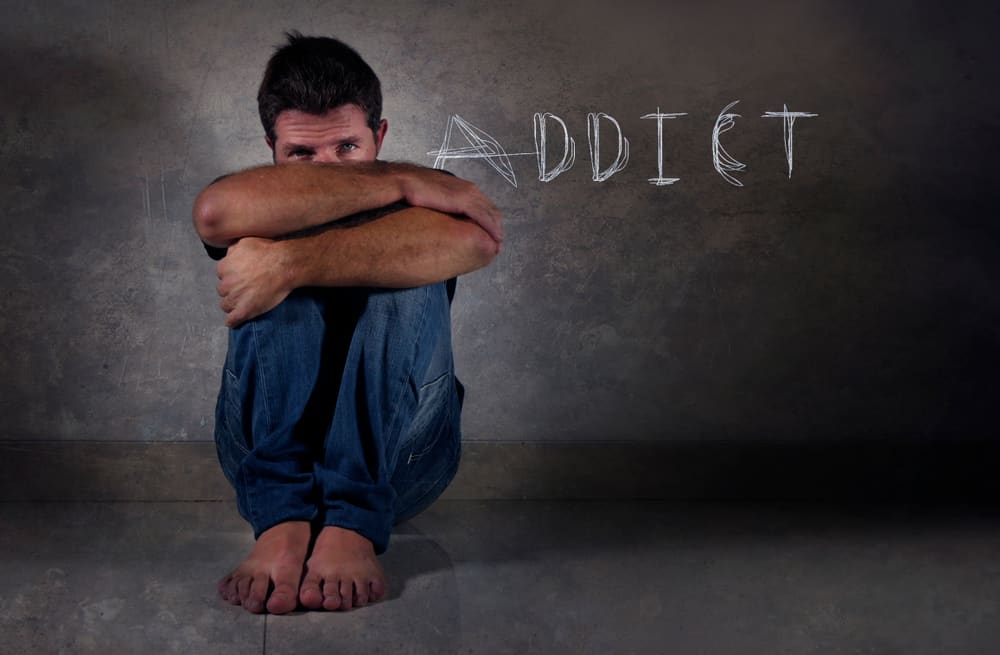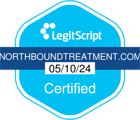Opiate abuse is more than a widespread problem throughout the United States — it’s an epidemic. It can affect anyone, regardless of income, gender, age, or ethnicity. According to the CDC (Centers for Disease Control and Prevention), there were 70,237 drug overdose deaths in the U.S. in 2017, 68% of which involved opioids.
Northbound Treatment is committed to helping individuals overcome drug addiction and substance abuse disorders at our rehabilitation center, including those who use opiates and opioids. When someone is misusing opiates or may have an opiate addiction, they often exhibit certain behaviors and physical characteristics. Whether you suspect a loved one is addicted to opiates or are looking for clarity about your own drug habit, Northbound is here to help. Keep reading for a breakdown of the telling signs of opiate use, abuse, and addiction.
What Are Opiates?
Opiates and opioids are narcotic analgesics (powerful painkillers). The active ingredient in opiate drugs (opium) is naturally derived from poppies. In contrast, the active ingredients in opioid drugs are synthetic, meaning they’re made in a lab.
The terms are often used interchangeably and cover a wide range of drugs. Some of the most common opiates and opioids include morphine, codeine, heroin, oxycodone (OxyContin), hydrocodone (Vicodin), fentanyl, meperidine (Demerol), hydromorphone (Dilaudid), and propoxyphene (Darvon).
Signs of Opiate Use
Many people receive opioid prescriptions for pain management. Simply using narcotics with a prescription doesn’t necessarily imply the opiate drug is being abused or will lead to an addiction. However, the high potency of opiates makes them extremely addictive, so misuse and chemical dependency are common.
Some signs of opiate use are blatant, especially if you know what to look for. And yet, others are easy to miss. If you’re concerned about someone close to you or whether your own opiate use may be a problem, here are the red flags.
When someone uses opiates regularly, they will often:
- Be abnormally drowsy or lethargic
- Appear confused
- Have notably small pupils
- Talk slower than usual
- Breath slowly
- Experience nausea
- Experience constipation
- Appear euphoric
- Seem paranoid or agitated
- Have slow reaction times
Opiate use is the first step in a full-fledged opiate or opioid addiction. Many people can begin with a prescription or try an opioid pill they acquire elsewhere, and without realizing it, they can quickly become dependent. If someone is using opiates and becomes chemically dependent, they’re often reluctant to acknowledge that they have a problem.
That being said, opiates are potent, habit-forming drugs, and using them can be a slippery slope. If you observe some of the signs above, early intervention can prevent opiate use from becoming an addiction.
Signs of Opiate Abuse
As we mentioned, regular use of opiates can quickly turn into opioid abuse. In a study published in the Journal of General Internal Medicine that surveyed five years of claims records from HealthCore, more than half of patients who received at least 90 days of prescribed opioids remained on narcotic painkillers years later. The signs of opiate abuse involve the same indicators of opiate use, along with a few others.
When someone is abusing opiates, they will often:
- Develop tolerance and require higher doses to achieve the desired effect
- Take higher or more frequent doses than prescribed
- Take medications prescribed to someone else
- Experience withdrawal if they go more than a few hours without a dose
- Appear agitation or have atypical mood swings
- Nod off or sleep during the day
- Have pill bottles or other drug paraphernalia hidden throughout their home
- Combine narcotics with alcohol or other drugs
- Become uninterested in activities they used to enjoy
- Struggle financially
- Reach out to family, friends, and acquaintances to borrow money
Those abusing opiates or opioids may also attempt to get their doctor to prescribe more or seek out other physicians in an attempt to fill multiple prescriptions at once.
Signs of Opiate Addiction
The signs of opiate addiction include the signs of regular use and abuse, as well as some more extreme characteristics. With that said, addictions are generally more serious and all-consuming. While an opiate addiction should be promptly addressed with appropriate treatment, many of the warning signs are relatively easy to spot.
When someone is addicted to opiates, they will often:
- Appear flushed
- Have itchy skin
- Sleep in late
- Fall asleep at inappropriate times
- Exhibit angry outbursts
- Act impulsively
- Engage in high-risk activities
- Have needle marks on their arms or legs
- Wear long sleeves or pants to cover needle marks, even in hot weather
- Have fallouts with friends and family members
A person may show any of the signs of opiate use, abuse, and addiction at any stage of a drug problem. Some work harder to conceal their habits, while others are more conspicuous. However, generally speaking, the longer someone uses narcotics, the more apparent the red flags will be.
Effects of Long-Term Opiate Abuse
Using opiates or opioids over a long period can be severely damaging to a person’s physical, mental, and emotional health. Research indicates that in addition to presenting a high risk of ongoing abuse, using opioids for more than 90 days significantly increases an individual’s risk for major depressive disorder (MDD). Chronic use is also associated with anxiety.
Additionally, there are severe effects of opiates on the body. Long-term narcotic abuse can damage the liver and suppress the immune system by inhibiting the reproduction of white blood cells and hindering the production of antibodies. This is particularly problematic for those who inject drugs with a needle, which puts them at an exceedingly high risk for infections.
Opiate abuse is known to cause gastrointestinal issues, such as constipation, nausea, and vomiting, which are referred to as opioid-induced bowel dysfunction (OIBD) in severe cases. But that’s not all — excessive and ongoing opiate use affects the central nervous system, in some instances causing hyperalgesia (hypersensitivity to pain). Without proper treatment and a comprehensive plan for recovery, opiate abuse can be fatal.
The Dangers of Opiate Addiction
Opiate addiction often begins with a prescription. Yet even when it’s technically legal for an individual to consume, it can still be dangerous. In fact, those with opiate drug prescriptions often justify their habit as something they need or refuse to acknowledge that it could be problematic.
On the other hand, many people buy, steal, or are given pills that were prescribed to someone else. In addition to being illegal, taking someone else’s opiates is considered substance abuse. Using narcotics without a prescription or abusing street drugs such as heroin can result in criminal charges.
Apart from being a substantial health and legal risk, opiate addiction can negatively impact virtually every aspect of a person’s life, as well as the lives of those closest to them. It’s not uncommon for an addiction to opiates to cause someone to lose their job, accumulate significant debt, or have difficulty paying their bills. Additionally, addicts often damage their relationships with their families, friends, and romantic partners.
The Right Time to Seek Treatment Is Now
Upon identifying substance abuse or addiction, seeking treatment as soon as possible is critical. If you’ve identified some of the signs of narcotic drug use but aren’t entirely certain it constitutes abuse, you may second-guess whether rehab is appropriate. However, drug and alcohol treatment is both valuable and vital at every level. Whether you’re seeking help to prevent a serious addiction or are looking to recover from the long-term effects of opiates, getting treatment is always the right choice.
To that end, no two journeys to recovery will be the same. Opiate use, abuse, and addiction are related — and individuals often quickly progress from use to addiction — but they require different levels of treatment. Furthermore, one person’s substance abuse recovery plan won’t necessarily involve the same types of therapy as the next person’s. For some, intensive residential rehab might be the best option, whereas others may thrive in an outpatient program.
At Northbound, we take an individualized approach to addiction treatment to set up our clients for success. When clients are successful, they’re able to get sober, address the cause of their substance abuse issues, build life skills, readjust to daily life, reach their goals, and achieve long-term vitality. If you’ve picked up on the warning signs of drug abuse and suspect a loved one is chemically dependent on opiates, we encourage you to reach out to Northbound Treatment immediately.
Opiate Detox & Addiction Treatment at Northbound
Northbound is proud to offer a fully accredited residential detox program in Orange County, along with a broad range of other drug and alcohol treatment services. For many addicts, detoxification is the crucial first step to sobriety, and a safe environment is essential. Visit our page to learn more about the detox timeline for opiates.
The substance abuse and addiction treatment programs at Northbound include both residential (inpatient) rehab and outpatient programs. With outpatient rehabilitation, clients can participate in intensive outpatient treatment and telehealth services. We’re in-network for most major health insurance plans and offer flexible payment options.
If you’re ready to begin treatment or are concerned about a loved one’s substance abuse, please don’t hesitate to get in touch with us. Start the admissions process now by calling (844) 919-0403 or filling out our online form.
Sources:
- Wilson, Nana. “Drug and Opioid-Involved Overdose Deaths — United States, 2017–2018.” MMWR. Morbidity and Mortality Weekly Report 69 (2020): n. pag. , https://www.cdc.gov/mmwr/volumes/69/wr/mm6911a4.htm
- “How to Spot Signs of Opioid Addiction.” Uofmhealth.org. N.p., n.d. , https://healthblog.uofmhealth.org/wellness-prevention/how-to-spot-signs-of-opioid-addiction
- Martin, Bradley C. et al. “Long-Term Chronic Opioid Therapy Discontinuation Rates from the TROUP Study.” Journal of general internal medicine 26.12 (2011): 1450–1457. Print., https://www.ncbi.nlm.nih.gov/pmc/articles/PMC3235603/
- “Is Someone You Love Using Opioids Illegally or Not as Prescribed?” Mayoclinic.org. N.p., 9 May 2018., https://www.mayoclinic.org/diseases-conditions/prescription-drug-abuse/in-depth/how-to-tell-if-a-loved-one-is-abusing-opioids/art-20386038
- Semenkovich, Katherine et al. “Prescription Opioid Analgesics Increase Risk of Major Depression: New Evidence, Plausible Neurobiological Mechanisms and Management to Achieve Depression Prophylaxis.” Missouri medicine 111.2 (2014): 148–154. Print., https://www.ncbi.nlm.nih.gov/pmc/articles/PMC6179498/
- Roy, S., and H. H. Loh. “Effects of Opioids on the Immune System.” Neurochemical research 21.11 (1996): 1375–1386. Print., https://www.ncbi.nlm.nih.gov/pubmed/8947928
- Kurz, Andrea, and Daniel I. Sessler. “Opioid-Induced Bowel Dysfunction: Pathophysiology and Potential New Therapies.” Drugs 63.7 (2003): 649–671. Print., https://www.ncbi.nlm.nih.gov/pubmed/12656645










